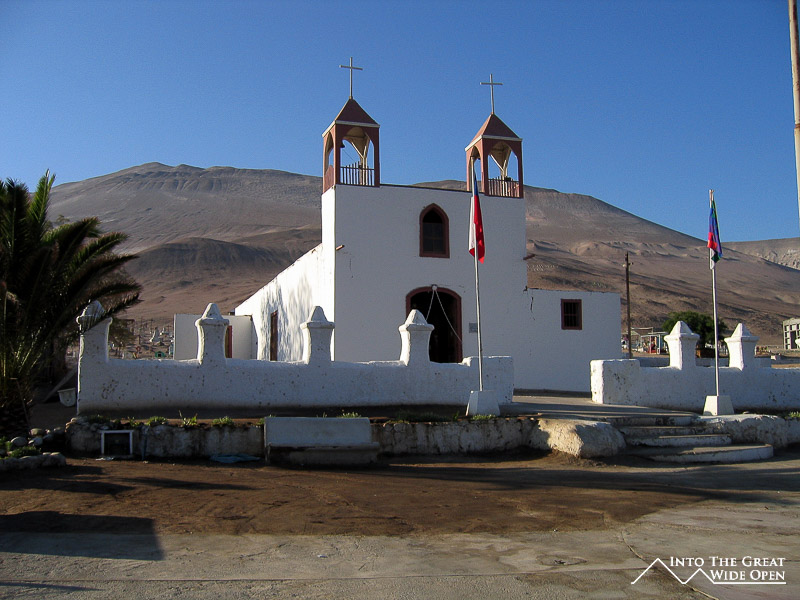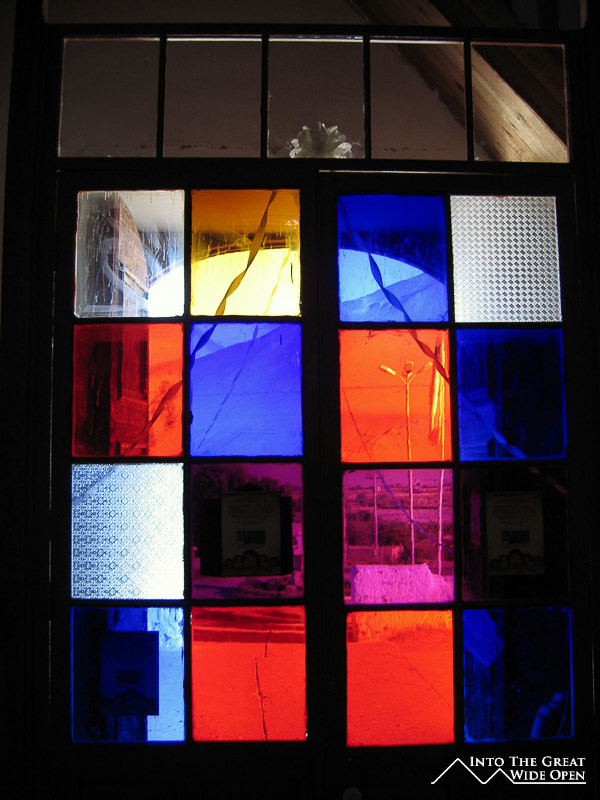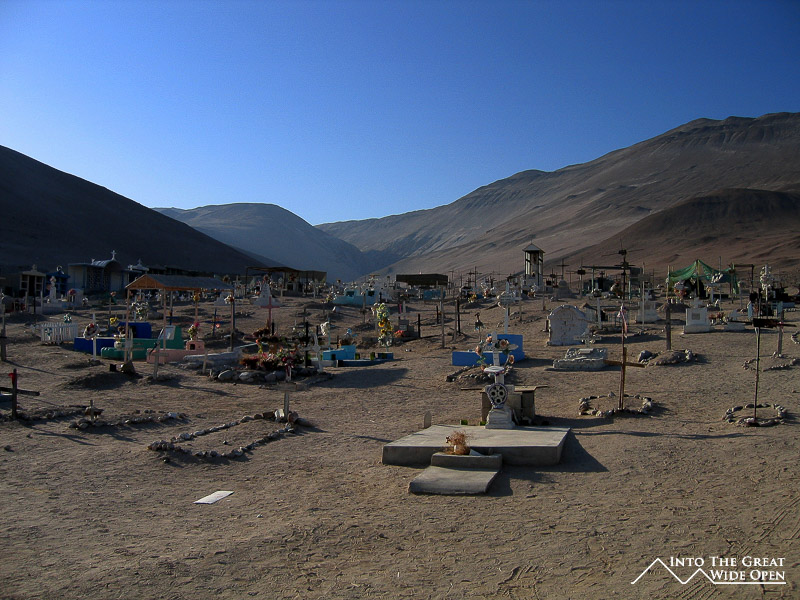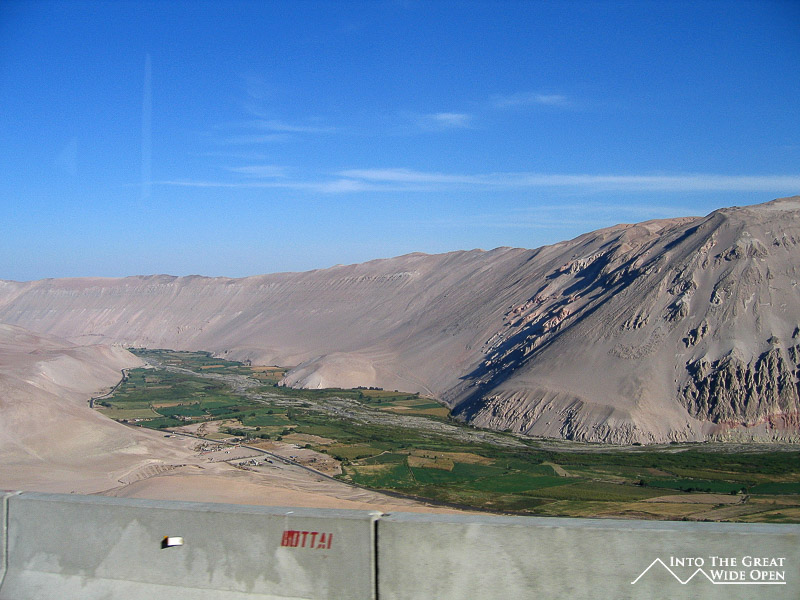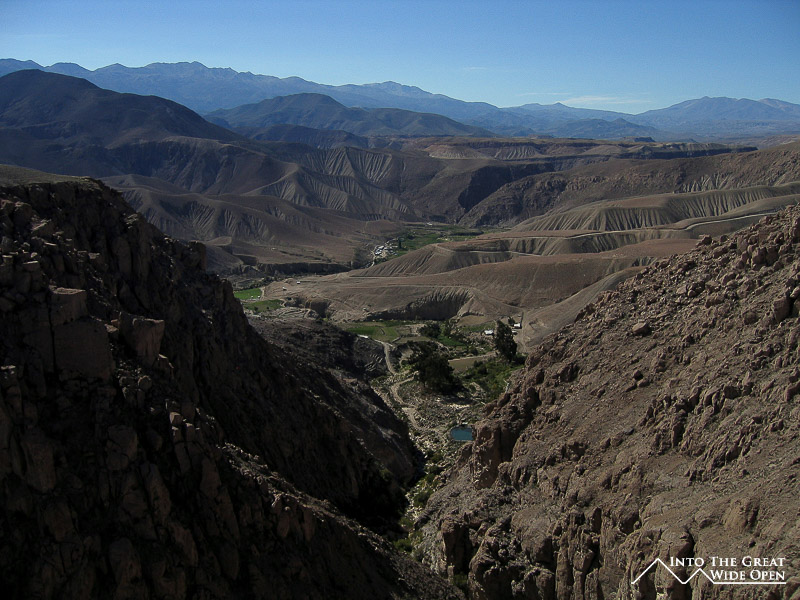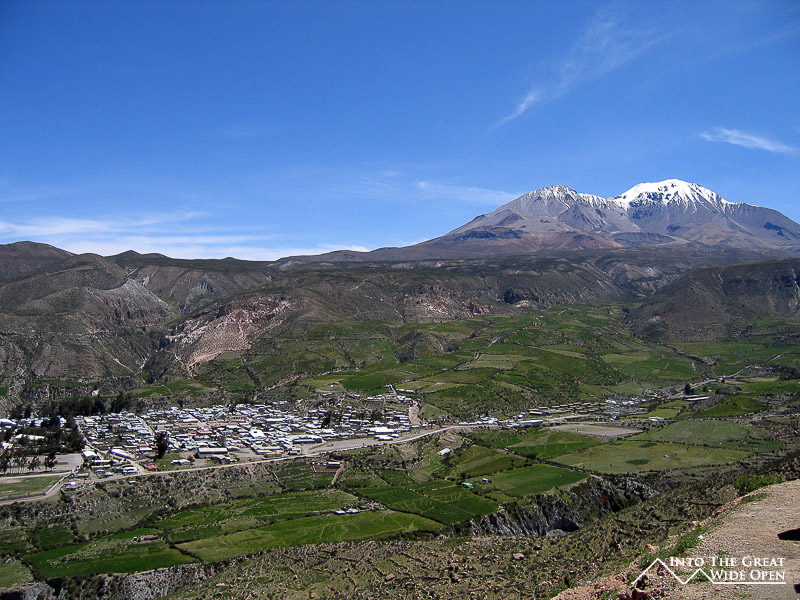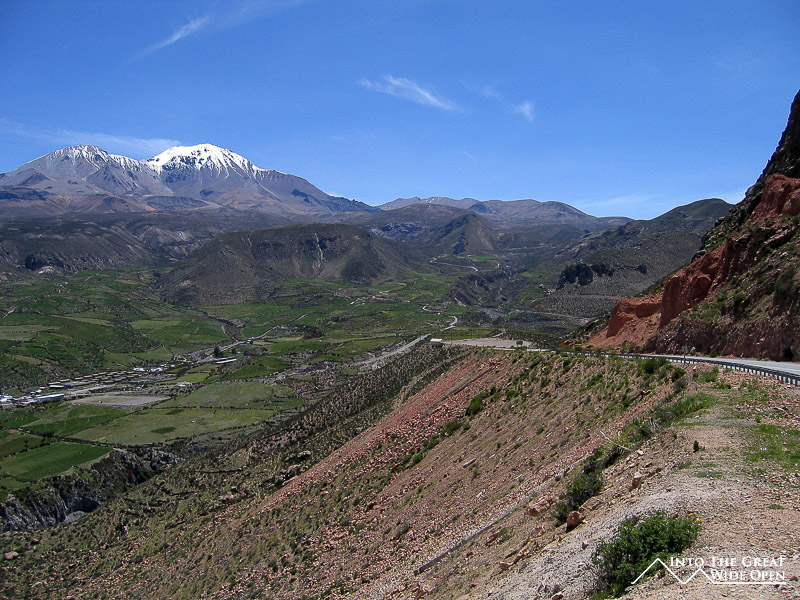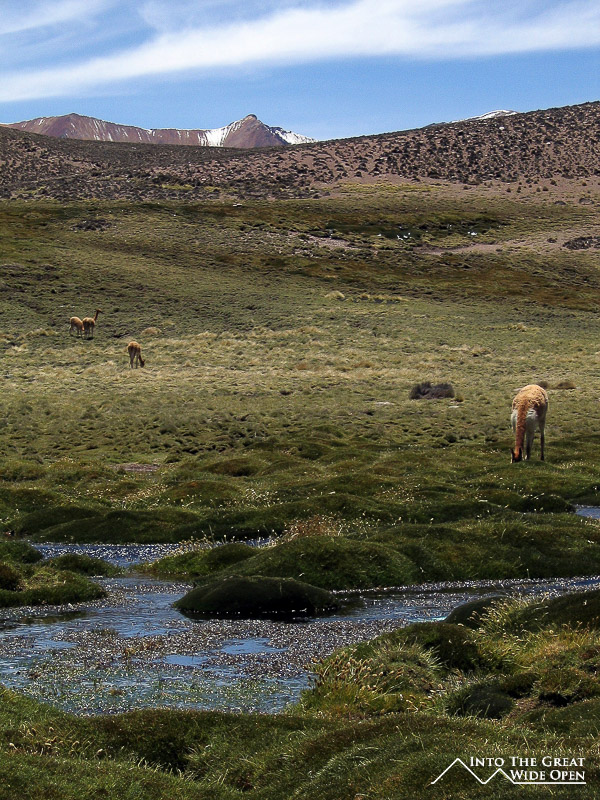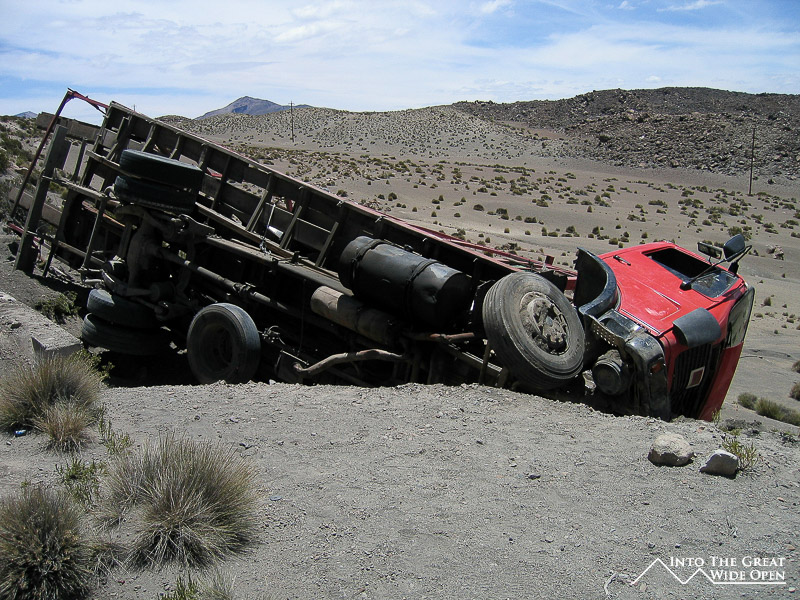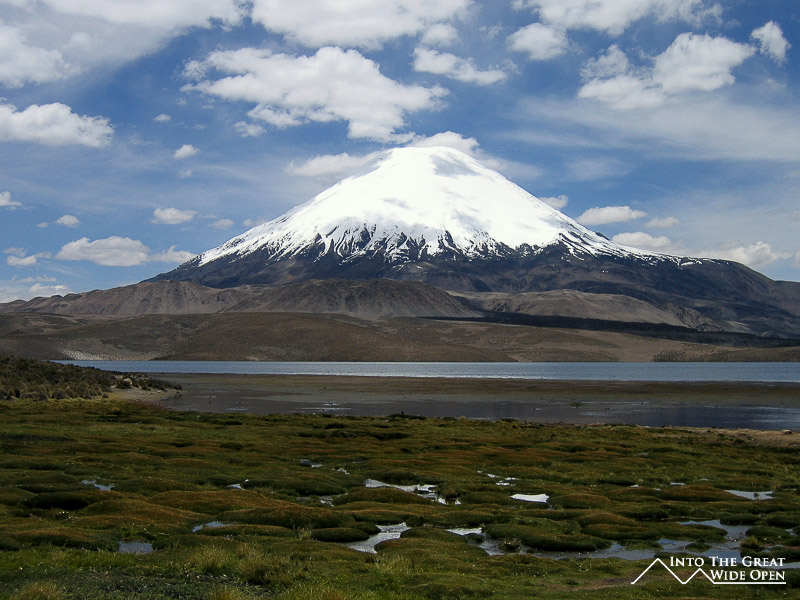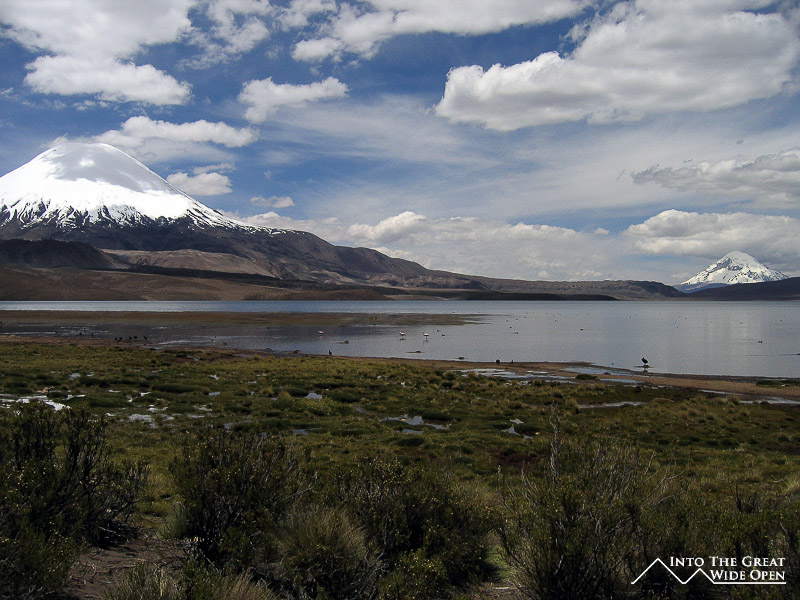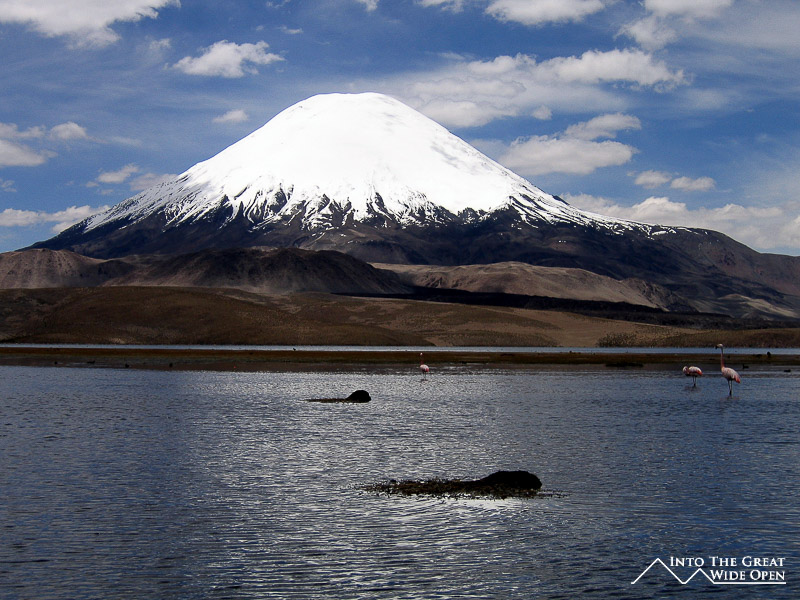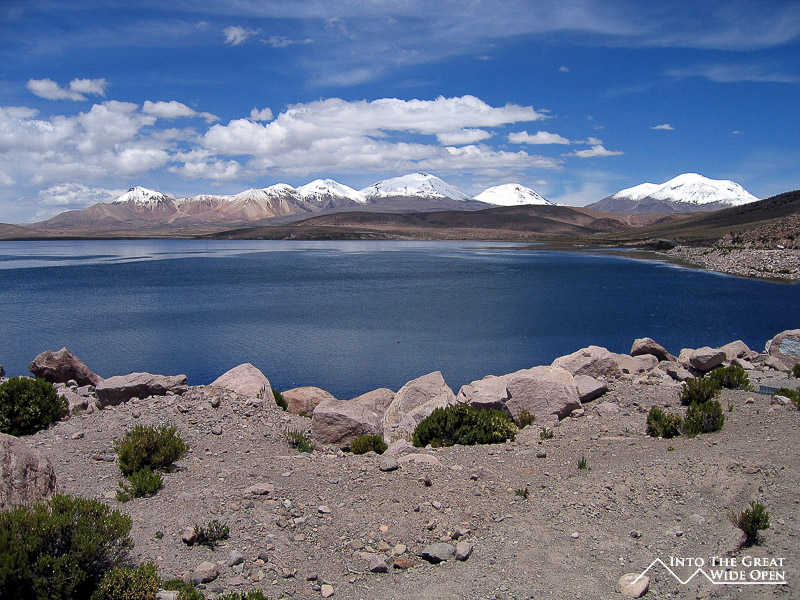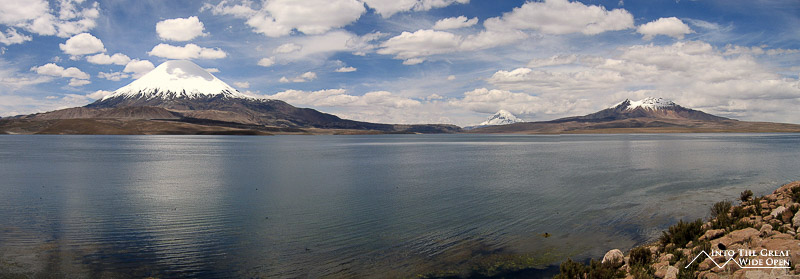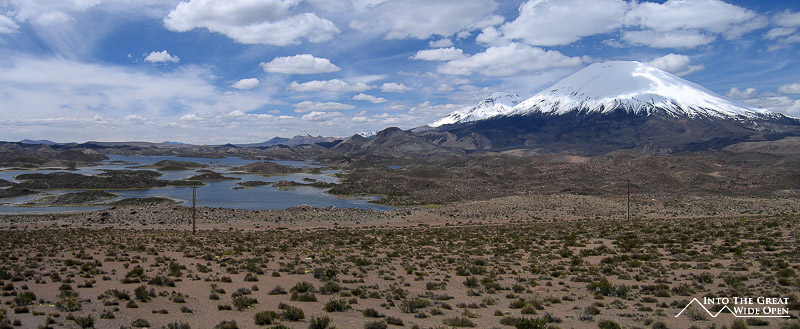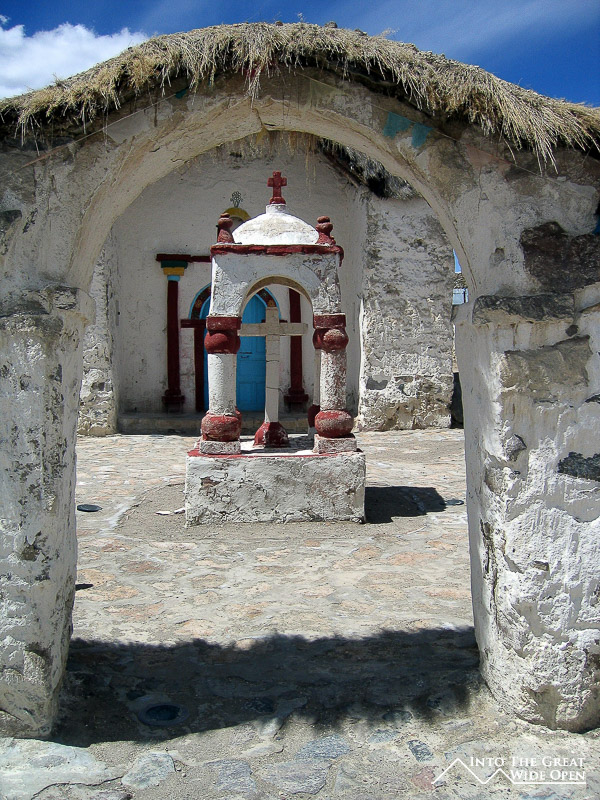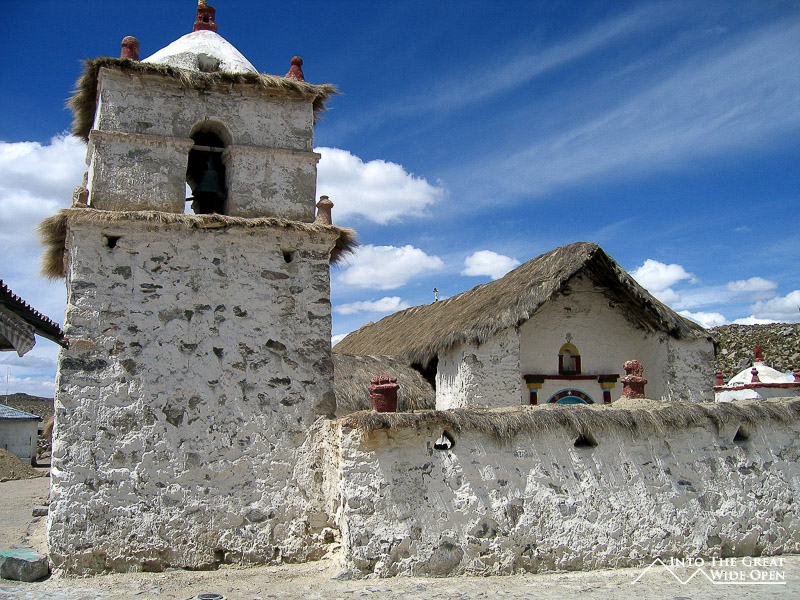Parinacota, Chile
Parque Nacional Lauca
March 2, 2008
I'm leaving my sorrows and all my memories behind to see what I find
Somewhere in the shade near the sound of a sweet singing river
Somewhere in the sun where the mountains make love to the sky
- John Denver

Other than mountain climbing, if you are ever going to get altitude sickness it will certainly happen during the one-day tour to Parque Nacional Lauca from Arica. The trip begins at sea level on the Pacific coast and in about six hours you are standing at the highest lake in the world Lago Chungara at about 4,500 meters. The changes in scenery along the way are remarkable, although the long distances travelled and the severe changes in elevation make for a very long day. From sea level the road winds eastward through a sandy canyon along a narrow stretch of a fertile valley; there are a few unimpressive petroglyphs on part of the canyon but not much else. The road gradually climbs up the side of the canyon and with the changes in altitude the sand disappears to reveal rocky mountains.

There is a nice old church that we visited with a dry and dusty cemetery in the back. Following that stop the road continues its journey upward and some vegetation finally becomes visible on the mountainsides as the temperatures drop. A few hours into the journey we reached the viewpoint over the town of Putre at 3,500 meters, the closest town of any size to the national park. Further past Putre we passed the checkpoint to the entry of the national park. The main road from Arica to La Paz actually runs through the park so if you take a bus on this route you´ll get to see much of the same beautiful scenery, but without the opportunity to stop and appreciate it. Before reaching what is supposedly the world´s highest lake there is a series of tiny little lakes interwoven with rocky mounds, I guess these are actually too small to be considered lakes because they are at an elevation of 4650 meters, the highest point reached on this journey.
In the background are the snow-capped peaks of about a dozen mountains and some volcanoes that lie further north towards the Bolivian border. The clear air at this altitude makes them seem much closer than they actually are. Over the crest of the hill from these little ponds Lago Chungara finally comes into view. We had about 30 minutes or so to walk around parts of the lake nearest the road and it was an amazing sight. There were flamingos and some other birds on the lake and the lake spreads out at the foot of a massive volcano, Volcan Parinacota, while other more distant peaks ring the far sides of the lake. When the wind was still there was a near perfect mirror reflection of the volcano in the waters of the lake. I think this was one of the more beautiful places I have seen so far on my trip.

Some of the people on the tour were really suffering from the altitude and couldn´t walk around too much, I didn´t have any problems, probably from being accustomed to high elevations after traveling south all the way through the mountains from Bogota. At this point we were actually quite close to the Bolivian border, maybe only 30 minutes or so away before turning around and heading back towards Arica. On the way back we stopped in the town of Parinacotta, a small village with an old church. The village seemed to be mostly abandoned with everything closed and most houses locked up and uninhabited. I finally found someone in the village to talk to and asked him how many people lived in the village. He paused for a few moments, almost as if he was counting in his head, and then said that only four families live there now and the rest had all moved away to Putre or other bigger villages, leaving the town to crumble behind them.
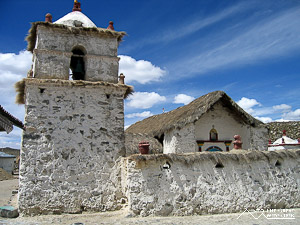
Even Putre seemed like it had seen better days. There were a few tour operators in town but almost everything was closed except for a few small restaurants and stores. These small villages in northern Chile seem to be much more affected by the pull of the surrounding modern cities than those in Peru, where the rural farming life still dominates. After a very late 4pm lunch in Putre, by which point everyone was starving, we made our way back down towards the ocean and those suffering from soroche or altitude sickness finally got some relief. By the time we actually got back to Arica it was almost 8:30pm, a long 13 hour day.
